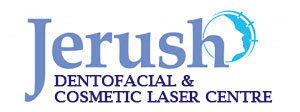Facial surgery
Facial surgery encompasses a broad range of surgical procedures aimed at improving or correcting the appearance, function, or structure of the face. These surgeries are performed for both cosmetic and medical reasons. Facial surgeries can address issues such as congenital abnormalities, trauma, aging signs, or aesthetic concerns, helping to enhance both the appearance and function of the facial features.
Types of Facial Surgery:
- Cosmetic Facial Surgery (Aesthetic Surgery): These procedures are performed primarily to enhance or rejuvenate the appearance of the face. They are typically elective and not medically necessary.
- Rhinoplasty (Nose Job): Surgery to reshape the nose, which can improve its size, shape, and function (such as correcting breathing issues).
- Facelift (Rhytidectomy): A procedure that lifts and tightens the skin of the face and neck to reduce sagging and wrinkles, offering a more youthful appearance.
- Blepharoplasty (Eyelid Surgery): Removal of excess skin, fat, or muscle from the eyelids, either for cosmetic reasons (to remove puffiness or drooping) or to improve vision if the eyelids are obstructing the field of vision.
- Brow Lift (Forehead Lift): A procedure to raise sagging eyebrows and smooth out wrinkles on the forehead, helping to open up the eye area and provide a more refreshed appearance.
- Chin Augmentation (Genioplasty): Surgery to reshape the chin, often involving implants or bone surgery to achieve better facial balance and symmetry.
- Cheek Implants: Cosmetic surgery to enhance or restore volume in the cheek area using implants or fat grafting for a fuller, youthful appearance.
- Liposuction: Removal of excess fat from the face (often under the chin or around the neck) to improve facial contours.
- Otoplasty (Ear Surgery): Surgery to reshape or reposition ears that are protruding or misshapen.
- Facial Contouring: Involves reshaping facial bones or soft tissues to achieve a more balanced appearance, sometimes using implants or fat transfer.
- Reconstructive Facial Surgery: Reconstructive facial surgery is performed to restore the function and appearance of the face after trauma, disease, or congenital deformities. It may involve repairing damage caused by accidents, birth defects, or medical conditions.
- Cleft Lip and Palate Surgery: Surgical procedures to repair congenital deformities in the lip or palate, typically performed in stages during childhood.
- Facial Trauma Reconstruction: Surgery to repair damage from accidents, such as broken bones, fractures of the jaw, cheekbones, or nose, as well as soft tissue injuries.
- Reconstructive Surgery for Skin Cancer: If facial skin cancer (such as basal cell carcinoma or melanoma) is removed, reconstructive surgery is performed to repair the affected area and restore the face’s appearance.
- Facial Nerve Repair: Surgery to repair damage to facial nerves, often caused by trauma or conditions like Bell’s palsy, which can result in facial paralysis.
- Orthognathic Surgery: This involves repositioning the jaw to correct misalignments, which can improve bite function and the overall appearance of the face.
- Burn Reconstruction: Surgery to repair facial scarring caused by burns, restoring both function and aesthetics.
- Minimally Invasive Facial Procedures: Some procedures don’t require full surgery but involve smaller, less invasive interventions to improve appearance or correct issues.
- Botox and Dysport Injections: Temporary treatments for wrinkles and fine lines by relaxing facial muscles.
- Dermal Fillers: Injectables like hyaluronic acid (e.g., Juvederm, Restylane) that fill in wrinkles, restore volume, or contour areas such as the cheeks, chin, and under the eyes.
- Chemical Peels: A chemical solution is applied to the skin to exfoliate and improve skin texture, tone, and clarity, often used to treat age spots, fine lines, and acne.
- Laser Skin Resurfacing: Laser treatments to reduce wrinkles, scars, and sun damage by stimulating collagen production and removing damaged skin layers.
Factors to Consider Before Facial Surgery:
- Age and Health: The patient’s age, overall health, and any pre-existing conditions like diabetes or smoking habits can affect the outcome and healing process.
- Expectations: It’s essential to have realistic expectations regarding the results. Surgery may enhance appearance, but it will not create perfection.
- Recovery Time: Depending on the type of surgery, recovery can range from a few days to several months. Some procedures, like facelifts or rhinoplasties, require more extensive downtime.
- Risks: As with any surgery, facial procedures come with risks such as infection, scarring, anesthesia complications, or dissatisfaction with results.
- Surgeon’s Experience: Choosing a skilled and experienced surgeon who specializes in facial surgeries is critical to achieving the desired results safely.
Why People Opt for Facial Surgery:
- Aging: To address signs of aging such as wrinkles, sagging skin, or volume loss (e.g., facelifts or eyelid surgery).
- Cosmetic Enhancements: To enhance features such as the nose, chin, cheeks, or lips for improved facial symmetry and aesthetics.
- Reconstruction after Trauma: To repair facial damage caused by accidents, injuries, or burns, restoring both function and appearance.
- Correcting Congenital Defects: Surgery may be performed to correct congenital abnormalities like cleft lip, cleft palate, or ear deformities.
Aftercare and Recovery:
- Post-operative Care: After facial surgery, following the surgeon’s aftercare instructions is crucial for minimizing complications. This includes managing swelling, taking prescribed medications, and avoiding strenuous activities.
- Swelling and Bruising: Swelling and bruising are common after facial surgery, particularly in procedures like facelifts, rhinoplasty, or eyelid surgery. Most swelling subsides within a few weeks.
- Scarring: Many facial surgeries, such as rhinoplasty or facelifts, leave scars, but a skilled surgeon will place incisions in inconspicuous areas to minimize visible scarring.
- Follow-up Appointments: Regular follow-up visits to the surgeon will help monitor healing and ensure any potential complications are addressed promptly.
Conclusion:
Facial surgery can significantly enhance both the function and appearance of the face, whether for cosmetic or reconstructive purposes. Whether you are seeking to rejuvenate your appearance, repair damage from trauma, or correct a congenital issue, these surgeries can improve quality of life and confidence. However, it’s important to choose a qualified and experienced surgeon, set realistic expectations, and be prepared for the recovery process.
Meet Our Specialist

DR. C. Binila Asir
MDS
